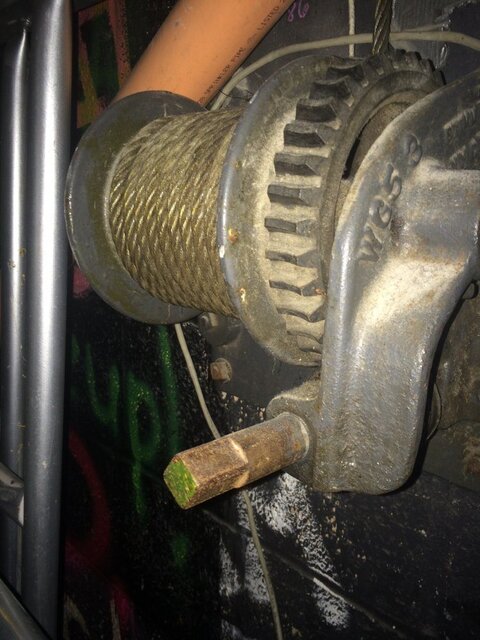smdoremus
Member
Hey all - this is my first post here. I just took over as my high school's theater director, which of course means I'm not just director, but technical director as well. I want to bring down our three electrics to do some maintenance and set them up to hang lights from-scratch in the fall. All three electrics are hung on winches, but the winches are A) very old (the manufacturer doesn't seem to exist anymore - it says "Stimmel" on the side of each) and B) are hand-operable, but the actual crank has gone missing over the course of the last decade. I've included a picture of the winches as they are now.

I've done some research, and it looks like I may be able to find the right handle, once I get the measurements of the shaft. However, I've hand-cranked manual winches before, and know they're an absolute pain to work with, especially when raising the electrics back up. Would it be possible to use a heavy-duty power drill with a socket attachment matching the dimensions of the crank shaft? If so, based on the picture you're looking at, and the knowledge that I'm raising and lowering electrics, sometimes fully loaded with lights, what size/kind of drill do you think I'd need? I definitely will be purchasing a plug-in drill, not a battery-operated one, as I'm sure lowering and raising 30' pipes with lights on them will drain batteries pretty quickly.
Any help/recommendations/instructions/ANYTHING is very much appreciated. I want to make a purchase on a drill (or a manual crank if the drill is a no-go). THANK YOU ALL!


I've done some research, and it looks like I may be able to find the right handle, once I get the measurements of the shaft. However, I've hand-cranked manual winches before, and know they're an absolute pain to work with, especially when raising the electrics back up. Would it be possible to use a heavy-duty power drill with a socket attachment matching the dimensions of the crank shaft? If so, based on the picture you're looking at, and the knowledge that I'm raising and lowering electrics, sometimes fully loaded with lights, what size/kind of drill do you think I'd need? I definitely will be purchasing a plug-in drill, not a battery-operated one, as I'm sure lowering and raising 30' pipes with lights on them will drain batteries pretty quickly.
Any help/recommendations/instructions/ANYTHING is very much appreciated. I want to make a purchase on a drill (or a manual crank if the drill is a no-go). THANK YOU ALL!


